The next morning I was still feeling ropey from the drinking session from two nights ago, but we had to check out today ready to catch a bus to Salento. We'd booked a hostel called the Plantation House which had been recommended to us by quite a few people we'd met already. From Medellin, you can't catch a bus directly to Salento, so we had to research how to get there. From what we could come across, you are best to take a bus to Armenia and then they will drop you off at the bus stop that goes to Salento. There are buses that go to Armenia and Pereira and Salento is half way between both of them. So if you got a bus to Pereira, which you come to first, you'd then need to wait for another bus to take you to Salento. Or if you get the one to Armenia, you don't get it all the way to Armenia as you'd go past your turning for Salento.
So after checking out of the hostel, we got a taxi to the terminal de transportes sur, and asked them for a bus to Armenia
. One was pretty much leaving straight away so we hopped right on after paying. It was about 35000 pesos for the journey. It was a really nice coach, looked quite new and they had a tv right at the front for playing DVDs throughout the journey. The company we booked it with was Flota Occidental. We're still learning about the bus journeys and which companies to book them with as some of the buses are really luxurious coaches, and some of them are really small minibus type vehicles, so if you're going on a long journey, you'd want a bigger coach with a toilet on. We set off to depart Medellin to get to Salento around 12pm, we hoped to get there by 6pm as if would be dark after that and wanted to get there in daylight. Once we started going, I realised that the journey was going to be a bumpy ride. The journey was through mountains which you were literally snaking through the mountains. I already felt sick from two days ago, so going down forever ending windy roads just made me feel even worse. At one point I really thought I was going to be sick on the coach, but there was no toilet on this bus
. I just had to close my eyes and try not to look down or think about us travelling through the mountains. I just hoped the whole journey wouldn't be through mountains the whole way. They put a DVD on for all to watch, it was the Hangover- (just what I was suffering from) dubbed in Spanish! As I felt too ill, I just tried to get some sleep. After a couple of hours, the driver stopped somewhere for us all to go toilet and get some food. I had an ice-lolly which made all the difference. We set back off on the journey again and after a while we reached flat ground, which I was so pleased to see. We stopped off at Pereira for a while to see if any more passengers wanted to get on, we had to just check with the driver that this wasn't our bus stop. When he confirmed it wasn't our stop, he asked us if we were going to Salento, so we said yes. This was so that he could drop us at the bus stop which goes to Salento. Luckily there were another couple who got off the bus who were also going to Salento, so we got the bus with them
. If you stay on the bus right to Armenia, you'd be backtracking on yourself so best to get dropped of at the bus stop in the middle of nowhere if you're not alone.
So once we got on the small local bus to Salento, this time we had to take our big rucksacks in the bus with us and didn't put them in the boot. The bus was quite full, so there wasn't really anywhere to sit with our big packs, so we had to stand right near the front of the bus, trying to balance ourselves and keep an eye on our things. The bus journey is suppose to be a dodgy one, whereby sometimes you are followed on to the bus and then robbed of your hand luggage, so you're not allowed to leave it out of your site. I was worried about leaving my daypack on the floor so didn't drop it, but John left his on the floor, John also had another small man bag he was carrying. Someone in the front seat got off the bus, so I sat next to a local man who was talking to me in spanish telling me how much we should pay
. I had my big rucksack on right next to him, must have taken up loads of room. He told us where to get off the bus for Plantation House and we got off the bus. As they are always in a hurry, they usher you off the bus so quickly, I'd already lost my walking boots, and this time the small man bag that John was carrying, we think he left this on the bus, so this was something else we'd lost. Luckily, all that was in the bag was our South East Asia guide book and a SIM card John bought for when his contract finishes. So we are going to be much more careful when getting off buses and making sure we have all our things in future.
We saw a sign that said Plantation House 100 metres this way, so followed that to get there. By this time it was getting dark, so we hoped they would still have a room for us as they only said they should have rooms when I emailed them the night before. We walked up the path to the reception and tried to check in. We bumped into an American couple who were also hoping to get a room at the hostel
. They went first and they said they were full. So we went after trying to explain that we'd booked a room. At first they still said they were full, and I tried to show them the email confirmation. The guy couldn't speak very good English and me not good Spanish, but he went away and got some lady, who came over. I explained that we'd booked it for 4 nights, and she said ah yes you are lucky this is our last room. So she checked us in and it was a room that would normally sleep up to 4 people, so we had plenty of space to out all our stuff. It was a quaint old place, and our room had a fire place, so this could be cosy and remind me of being at home. So once checked in, we were going for a walk around the local area. The owner Tim came over and said have you got 5 minutes and I'll show you our house. So we went with him on a guided tour of the area and his house. He was a British guy who'd come to live in Salento around 10 years ago. He showed us the views from the back of his house, as you can watch the sunset from there, and he said if we wanted to watch it there, we were welcome to come and sit in his garden with a beer or wine, quality bloke and was really a genuine person
. He owns the coffee plantation also, and runs tours, so we decided to do the tour the next morning. After meeting Tim, we went to get some dinner and walk around the area of Salento. We walked right through the main square and to the end of the street and found a nice cafe the restaurant that looked busy, and was quite cheap, so we ate there. It was getting pretty cold now, so perhaps we can light the fire one night we're here. We got back to the hostel and chilled out for a bit ready for an early start in the morning for our coffee tour.
Coffee Plantation Tour
The tour starts at 9am, so we got up and went over to the main reception to wait for Tim to arrive to do the tour. Luckily, as we were staying at the Plantation House, we didn't have to travel too far, as the plantation was right next door to where we were staying. There were about 30 people doing the tour, so quite a lot of us. Tim introduced himself to everyone and even mentioned that if they wanted to come and see the sun set that they could come to watch it in his garden
. So on the tour Tim told us about the types of coffee beans you can get, there are two; robusta and arabica- the former contains more caffeine and the latter one is grown in Colombia and is considered to have a more aromatic flavour. There are also two types of coffee tree, known as typica and modern. The coffee plant grows as a bush, and it carries blossoms and fruits (coffee cherries) which ripen and develop into coffee beans. The coffee bean you are familiar with is the seed of the coffee plant. There are two colours of the coffee cherries, they are red and yellow. What Tim did tell us is that there is absolutely no difference to the taste or look of the beans that come from either of the colours. He actually pulled some red and yellow cherries off the trees to demonstrate this to us also. When you gently squeeze the coffee cherry, there are actually two halves to the coffee bean. The bigger the bean, the more it can get sold for, however, the size of the bean makes absolutely no difference to the taste of the coffee
. Tim said that the growing conditions for coffee has to be a hot humid environment, where it has to be between 1100-2300 metres above sea level, it must be able to produce enough rainfall to help the plants grow, but enough sunshine also. There must be shade for the plants, as they do not like to be in direct sunlight for a lot of the time. Often coffee plantations will grow other fruits, especially bananas as the canopy that the big palm leaves provides for the coffee plant is essential. It is often grown on steep slopes also. After a coffee plant has been sowed, you can expect to see the plant producing coffee beans within 3-5 years, so it's a long slow process. However, each coffee plant can give up to 20-30 years of harvest. Many coffee plants are planted close to each other, thus giving enough beans for a harvest. The areas where coffee farms are quite small in terms of hectares, most are less than 2 hectares, so most farms are family owned businesses. Once the cherries are ready to be picked, they are picked from inside to the outside of the branches
. Once the coffee cherry has reached the end of the branch, it will not grow in the same spot again, until the tree is cut back to re-harvest the tree. It can be cut back once, and will once again produce a whole new supply, as if it's a brand new tree.
So once Tim gave us the information about how coffee is grown, he showed us the process and steps that are taken to make coffee from picking the coffee cherries on the tree, to the drying and roasting processes. There are about 25 steps or so. I'm not going through all the steps here, see the pictures I put up below. When we'd been told all the steps that were involved in making coffee, we got to see the coffee beans being freshly roasted and we got to try the types of coffee. There are two types of coffee that we got to try; arabico typica and bourbon. Now anyone who knows me would know that I don't really like coffee, but being on a tour of a coffee plantation, it would be rude of me not to try the coffee, so I did try it. We were handed over to Tim's colleague, a Spanish man who works at the plantation, his section of the tour was in Spanish so I had to listen in carefully
. It was actually quite easy to understand as he was showing us the processes while he was talking. We got to smell both types of the beans, bourbon and typica, and we got to see both types being roasted. First, we tried the bourbon, this was more of a rich and creamy aroma, and as coffee goes, I actually liked this one. Now the only way to drink it here is black, and if you want some sugar, you can have some, so I had a little sugar in it to sweeten it up. I loved the smell of this coffee too, while it was being roasted fresh it just smelled so good you could eat it. Then we tried the typica coffee, now I don't know if it was because I didn't add in enough sugar or if it was just the taste of this one, but I didn't really like this one, to me it tasted quite sour. So I could quite happily drink bourbon coffee without milk. As I'm not getting any cups of tea over here, I may just have to substitute tea for coffee.
After our tasting sessions, we hung around for a bit, then went for a walk around the farm and went down to the bottom to look out at the views
. In the way back up, we saw an orange tree, so picked a fresh one off the tree and ate it straight away, it was good. Then we had to walk right back up to the top again, which took its toll on me, as I was out of breath by the time we reached the top. Oh I forgot to mention that at the plantation house they own some really cute dogs. One in particular is called iPod and that is because the owner is the only one in his family who didn't own an iPod so the daughter told him to name the dog iPod so that he can say he has one. It's such a lovely fluffy white dog, sort of like a white husky. There were also some other dogs, but iPod was the cutest, and he only liked humans and not other dogs. He would just follow you around and always wanted attention.
After the tour we went for a walk and got some lunch from within Salento. We then came back so we could watch the sunset in Tim's back garden, as he said we could and the views from there were stunning. John got a couple of beers and I just got a coke from the hostel as that is all they had. We were the only ones there and just sat down on the grass to watch the sun go down, but then quite a few more people started to turn up so we all ended up watching the sun go down. An Australian girl called Kylie started talking to us and she was travelling on her own. After the sun had gone down, most of the people there went home, and it was just us and Kylie left. We were going to get some food but I didn't want to just leave Kylie on her own, so I asked if she wanted to come for dinner with us
. The owner Tim had told us about a local restaurant that did currys with naan breads so we were going there. Kylie said she would like to come with us so we went off to get a curry. The restaurant was called La Eliana and we sat inside, but later realised that there was an outside garden section. There was a really sweet dog who was outside when I went to the loo, and she was waiting for someone to throw a stick, and then she would collect it and bring it back to you. The dog kept wanting you to throw and fetch the stick, in a way it was good we didn't sit outside, as the dog kept wanting to play constantly. The food came and we had naan bread with it. We all had curry and enjoyed it, first one since we've been here. After the restaurant we all walked back and Kylie walked to her own hostel and us to the Plantation House. We said we were going to to the Valle de Cocora tomorrow and Kylie also said she was going, so we said we might meet her at the bus stop the next morning. We were to get an early night as had to be up in the morning to trek to Valle de Cocora, which are some of the tallest wax palm trees in the world
.
Valle De Cocora
We got up and walked to the main square in Salento to find a jeep to take us to Valle de Cocora, they leave the square 3 times a day. We couldn't see Kylie anywhere so don't know if she did decide to do the hike or not. We pressed on without her anyway. We had to wait a while for the jeep to take us. They filled up the space in the jeep pretty quickly, but were just messing around before they decided to leave. There were about 6 people all crammed in the back of the jeep and at one point, some people were even going to stand up at the back holding on to the railings, but they later decided not to. After all the commotion, we were off. It was about a 45 minute journey ascending up through the mountains. We got dropped off at Cocora village and took the trail around the national park. It's suppose to be a 5 1/2 hour round trip, but the last jeep picks you up at 5pm, so you need to be back in time for that, so we probably would not have time to do the whole thing, as by the time we got there, it was nearly midday
.
We started walking the trail and I only had my walking sandals on, I could have really done with walking boots here, but I pressed on anyway. The terrain was rocks and some sand. It started off going downhill, but after a short while we went back ascending uphill. You could have hired a horse and rode uphill to get there, but we chose to walk. I've never really ridden a horse before, so didn't want my first time to be trekking uphill on rugged terrain. The thought did cross my mind tho. It was quite a nice walk through some nice scenery and we could see the tall wax palm trees in the distance. It was quite a foggy day, so we couldn't clearly see the trees and take any nice photos of them. They did look really tall in the background tho. There was another couple from the jeep, but they went a different way to which we did. We didn't know which was the right way to go, so just took a chance and went right. We were conscious of the time as we needed to make sure we were back in the main square for 5pm or we wouldn't catch a jeep back to Salento. So we would just turn around when we've had enough. You can hike all the way right up a mountain, or visit a national park reserve to see hummingbirds, so we'll have to see how long it takes to get up there.
On the way up, the trek starred to get more difficult and we had to scramble up some rocks over waterfalls. There were plenty of swing rope bridges and lots of wet mud, which was not good in sandals as I got them wet and muddy
. It was a nice walk going through the valleys tho. It's mostly uphill and climbing rocks as you are trekking to get to the top of the area. We didn't really see much wildlife in the trek tho, apart from a few butterfly's and a strange bee and a few birds. We had been trekking for about 2 hours when we were nowhere near the top of the valley and we were hungry, so we sat down for some lunch. I don't thing we'll make it right to the top now anyway as I'm struggling with it a bit due to my asthma and general unfitness. We walked right up to the section with the nature reserve and stopped to ask some people if it was worth going there. They said there isn't much at the area, so we decided not to hike further up to the reserve or the mountain as we would not get back to Cocora in time for a jeep to pick us up. We couldn't actually clearly see the was palm trees from where we were, so decided to just turn back afterwards. It was a bit of a disappointment tho as we'd liked up all that way for nothing it would seem. We didn't really have much information about Cocora before we got to the trek or which trail to follow so that is probably why
. I think you would need the whole day rather than a few hours if you wanted to do the whole trek there and back. Still it was a nice trek as you are going up for the first section of the walk, you do get to see the tall wax palm trees. I would still recommend a visit there, as some of the scenery is stunning. We walked back down to the start of the trek and made it back about 4.30pm, so just in time for the jeep to take us back to Cocora. We had to wait in the jeep until 5pm even tho it was full up at 4.30pm, so I got a well deserved ice lolly. We got the best views on the way back as we sat right at the back with the back window opened up so we could see out. Once back at the hostel, we needed some food, so we went to eat at La Eliana restaurant again and sat outside with the dog this time. The dog was there and we found out it was called Cooky, and it wanted to play with us. I gave in and kept throwing the stick until our dinner came and went to wash my hands. Luckily there were another family there so when we got our food, the children kept it entertained
. The dog was such a cutie and if you didn't throw the stick, you'd feel guilty with it's puppy dog eyes staring back at you.
Tejo
Once we finished dinner, we were just going to walk back to the hostel to have a quiet night in. We hadn't really met anyone at the hostel as nobody went in the social areas. So we got back, and went to the reception so John could get a few beers. We randomly bumped into one of the guys who was on the Valle de Cocora tour, so started talking to him in reception for a while. We asked them how they found the walk and where they went. After a while he told us they were going to play Tejo down the road and asked us if we would like to come with them. We of course said yes and went to play Tejo. For anyone that doesn't know, Tejo is the national sport of Colombia. Basically you throw a discuss like thing at a board and aim to hit the target. If you do, and you hit it correctly, the target will explode with the gun powder that is inside it
.
Tejo is Colombia's official national sport, designated by Congress. And quite a unique sport it is, combining horseshoes-style tossing and a bit of gunpowder, all lubricated by a generous flow of beer.Tejo is not easy. The first time you play, you might have trouble hitting the pit, much less scoring points.Tejo is said to be inherited from a sport played by the Muisca Indians, who competed to see who could throw a disk the furthest. Westerners had other uses for gold, and replaced it with an iron disk, also called a tejo, which can weigh up to two kilograms. For dramatic effect, they added the gundpowder. Newcomers to tejo usually assume that the goal is to explode the gundpowder. But in fact you score maximum points by getting your tejo to stick in the center, called a balazo. Next most valuable is exploding one of the gundpowder envelopes, called a mecha. Finally, the tejo which lands outside but closest to the iron disk is worth one point.
When we got to the bar, it was called Beta, It was a place specifically designed to play Tejo
. There is one Tejo target on each side of a room and each player aims to hit the target at one side until everyone had played their turn, then swap sides. You play your team opponents and get points for exploding the target or who can get closest to the target wins the team a point. John and I played with the American guy Tom- we were called team GB. Our opponents were Tom's girlfriend Paulina, and two German women; Becca and Cattya. The rules of the game involve buying a crate of 30 beers and if you don't finish them all, the barman buys them back off you, so you really want to finish the beers. John and Tom got stuck into the beers, and so did the girls so they should finish them by the end of the night. You throw the Tejo like a bowling ball, so needless to say, I was crap at the game. At one point, I threw it outside of the building (the wall was close by in my defence), luckily nobody was outside or got hurt. It was quite fun to play all the same, John got right into it and was actually really good at it as usual
. He exploded the target and set off the gunpowder twice throughout the night, I didn't set it off once. Pedro, our Tejo host loved John and he was taking pictures of us to go on his website as it was quite a new Tejo place in Salento. It as such a fun evening that we ended up playing two games. You play up to 27 points and the first game, team Germany won as Cattya exploded the Tejo twice, which gives you more points. The second game, we decided to play up to 19 as it was getting late, and we drew at 19 all, so had to have a tie break decider game, which we also lost. I think if it was just John and Tom playing, they probably would have won. Never mind, it's the taking part that counts. By the end of the night, John and Tom had managed to drink all the beers and even asked for another beer each. It was lovely meeting everyone and we all had some more pictures taken for the website and went downstairs to sign their blackboard to let them know how much we enjoyed our Tejo experience. We walked back to the hostel together, as funny enough everyone was staying there, but we hadn't seen them there before
. They were all checking out the next morning, so we wouldn't see them again. A fun night was had by all. Tejo is a good game, and should be introduced into the UK very soon, unless is being played somewhere already.
The next day was our last day. We were quite tired from our hike to Cocora from the day before, so we decided to not do a lot. We just walked up into the main square and had some lunch at a place called Brunch. It was a place specifically for backpackers with writing all over the walls from backpackers who had been in there. John and I left our mark there too. John had a lovely steak and eggs, and I chose a pancake, which was huge. Afterwards we were going to walk round the shops, however it started pouring down, so we just took refuge in the church in Salento and sat there till the rain stopped. Once it did, we just went back to the hostel. We couldn't resist a last supper at La Eliana with the dog Cooky, so we had our dinner there and played with the dog before dinner again. We were the last ones in the garden this time, so when I threw the last stick, I went leave, and turned back to see the dog was there looking up waiting for me to throw the stick, I felt guilty about leaving her, but i'm sure someone else will throw it for her again soon. We went back to the hostel and as we had a log fire in our room, we made use of this and lit the fire. It was so cosy with the fire as it reminded me if being back home. We packed up all our stuff, ready for our big journey tomorrow, as we are travelling to Popayan as a stopover to get to Ecuador.
Coffee farms and tall wax palms in Valle de Cocora
Sunday, August 04, 2013
 Salento, Quindio Department, Colombia
Salento, Quindio Department, Colombia
Other Entries
-
1Sacrificing home comforts for backpacker lifestyle
Nov 27250 days prior Canterbury, United Kingdomphoto_camera0videocam 0comment 4
Canterbury, United Kingdomphoto_camera0videocam 0comment 4 -
2The journey begins....
Jul 1124 days prior London Heathrow, United Kingdomphoto_camera6videocam 0comment 0
London Heathrow, United Kingdomphoto_camera6videocam 0comment 0 -
3Connecting flight Madrid-Bogota
Jul 1223 days prior Madrid, Spain and Canary Islandsphoto_camera0videocam 0comment 0
Madrid, Spain and Canary Islandsphoto_camera0videocam 0comment 0 -
4Bogota colder than England....
Jul 1322 days prior Bogota, Colombiaphoto_camera142videocam 0comment 3
Bogota, Colombiaphoto_camera142videocam 0comment 3 -
5Caribbean here we come.... Or not?
Jul 1718 days prior Cartagena, Colombiaphoto_camera41videocam 0comment 1
Cartagena, Colombiaphoto_camera41videocam 0comment 1 -
6So we bathed in some sloppy mud volcano.....
Jul 1817 days prior Cartagena, Colombiaphoto_camera16videocam 0comment 6
Cartagena, Colombiaphoto_camera16videocam 0comment 6 -
7Santa Marta- the lost city... well boots actually!
Jul 2015 days prior Santa Marta, Colombiaphoto_camera123videocam 0comment 0
Santa Marta, Colombiaphoto_camera123videocam 0comment 0 -
8Jungle meets beach at Tayrona Park
Jul 269 days prior Santa Marta, Colombiaphoto_camera136videocam 0comment 2
Santa Marta, Colombiaphoto_camera136videocam 0comment 2 -
9Palomino- where the beach is just a beach...
Jul 278 days prior Palomino, Colombiaphoto_camera147videocam 0comment 0
Palomino, Colombiaphoto_camera147videocam 0comment 0 -
10Getting to know Escobar and the city of Medellin
Jul 305 days prior Medellin, Colombiaphoto_camera108videocam 0comment 0
Medellin, Colombiaphoto_camera108videocam 0comment 0 -
11Coffee farms and tall wax palms in Valle de Cocora
Aug 04 Salento, Colombiaphoto_camera160videocam 0comment 0
Salento, Colombiaphoto_camera160videocam 0comment 0 -
12Just an overnight stop in transit
Aug 084 days later Popayan, Colombiaphoto_camera6videocam 0comment 0
Popayan, Colombiaphoto_camera6videocam 0comment 0 -
13In and around Otavalo open air markets
Aug 095 days later Otavalo, Ecuadorphoto_camera121videocam 0comment 0
Otavalo, Ecuadorphoto_camera121videocam 0comment 0 -
14Quito- Gateway to the Galapagos...
Aug 139 days later Quito, Ecuadorphoto_camera42videocam 0comment 2
Quito, Ecuadorphoto_camera42videocam 0comment 2 -
15Cotopaxi the top of my world at 5,000 metres.....
Aug 1713 days later Cotopaxi, Ecuadorphoto_camera108videocam 0comment 0
Cotopaxi, Ecuadorphoto_camera108videocam 0comment 0 -
16One day to go until the Galápagos Islands...
Aug 1814 days later Quito, Ecuadorphoto_camera0videocam 0comment 0
Quito, Ecuadorphoto_camera0videocam 0comment 0 -
17Galápagos Islands day 1- Santa Cruz Island
Aug 1915 days later Galapagos Islands, Ecuadorphoto_camera70videocam 0comment 0
Galapagos Islands, Ecuadorphoto_camera70videocam 0comment 0 -
18Galapagos Day 2- Chinese Hat and Rabida Islands
Aug 2016 days later Galapagos Islands, Ecuadorphoto_camera108videocam 0comment 0
Galapagos Islands, Ecuadorphoto_camera108videocam 0comment 0 -
19Galápagos Islands day 3- Santiago Island
Aug 2117 days later Galapagos Islands, Ecuadorphoto_camera114videocam 0comment 1
Galapagos Islands, Ecuadorphoto_camera114videocam 0comment 1 -
20Galápagos day 4- Fernandina and Isabella Islands
Aug 2218 days later Galapagos Islands, Ecuadorphoto_camera92videocam 0comment 0
Galapagos Islands, Ecuadorphoto_camera92videocam 0comment 0 -
21Galápagos Islands day 5- Isabella Island
Aug 2319 days later Galapagos Islands, Ecuadorphoto_camera65videocam 0comment 0
Galapagos Islands, Ecuadorphoto_camera65videocam 0comment 0 -
22Galápagos day 6- Sierra Negra and Wall of Tears
Aug 2420 days later Galapagos Islands, Ecuadorphoto_camera58videocam 0comment 0
Galapagos Islands, Ecuadorphoto_camera58videocam 0comment 0 -
23Galápagos day 7- Santa Cruz and John's birthday...
Aug 2521 days later Galapagos Islands, Ecuadorphoto_camera70videocam 1comment 0
Galapagos Islands, Ecuadorphoto_camera70videocam 1comment 0 -
24Galápagos day 8 ,9 & 10 San Cristobel and farewell
Aug 2622 days later Galapagos Islands, Ecuadorphoto_camera108videocam 0comment 0
Galapagos Islands, Ecuadorphoto_camera108videocam 0comment 0 -
25Banos- thermal springs and time to relax...
Aug 3026 days later Banos, Ecuadorphoto_camera67videocam 0comment 0
Banos, Ecuadorphoto_camera67videocam 0comment 0 -
26Cuenca breaks up the long journey to Peru
Sep 0330 days later Cuenca, Ecuadorphoto_camera0videocam 0comment 0
Cuenca, Ecuadorphoto_camera0videocam 0comment 0 -
27We've arrived in Peru at long last
Sep 0431 days later Mancora, Peruphoto_camera37videocam 0comment 0
Mancora, Peruphoto_camera37videocam 0comment 0 -
28Huanchaco, Chan Chan and Trujillo
Sep 0835 days later Huanchaco, Peruphoto_camera105videocam 0comment 0
Huanchaco, Peruphoto_camera105videocam 0comment 0 -
29Huaraz gateway to the Cordilera Blanca mountains
Sep 1037 days later Huaraz, Peruphoto_camera89videocam 0comment 0
Huaraz, Peruphoto_camera89videocam 0comment 0

 Salento, Quindio Department, Colombia
Salento, Quindio Department, Colombia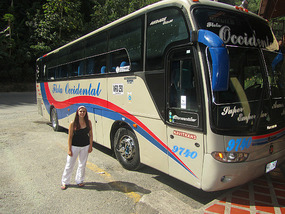
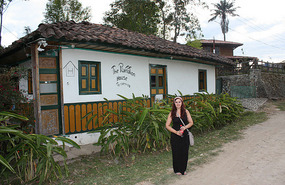
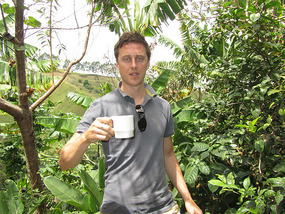
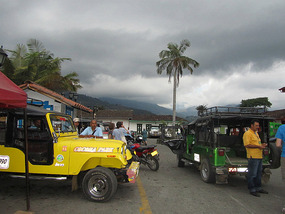
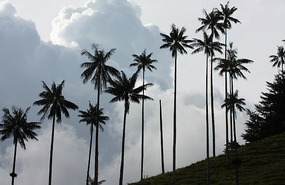
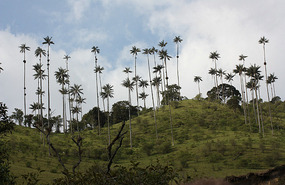
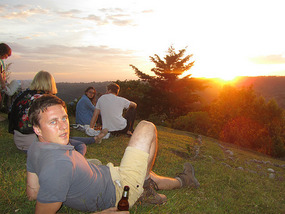

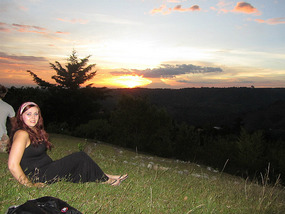
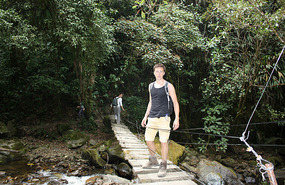
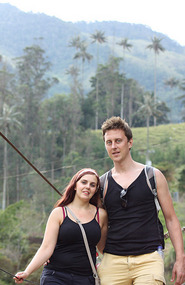
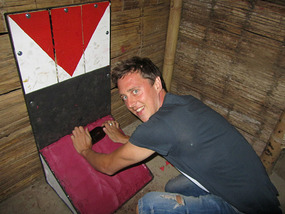

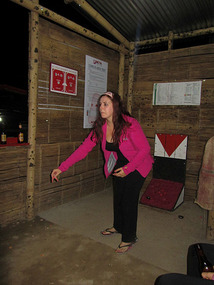
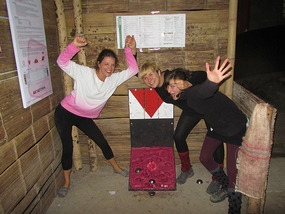
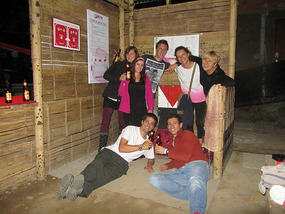
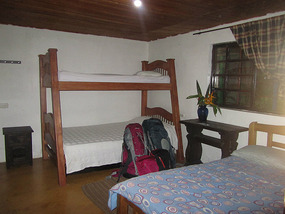
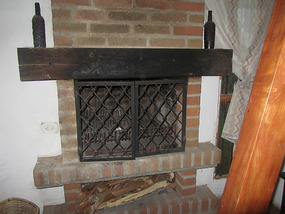
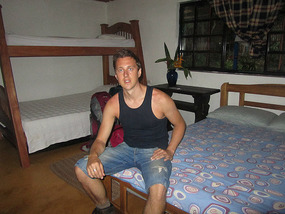
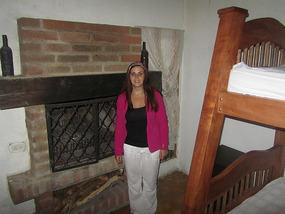
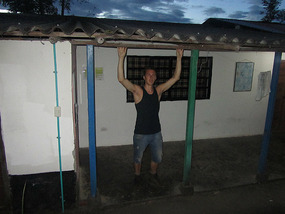





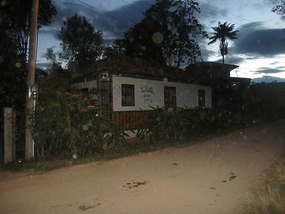
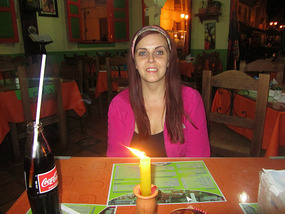
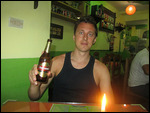
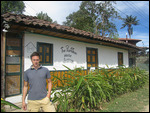
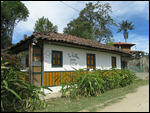
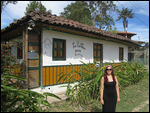
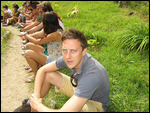


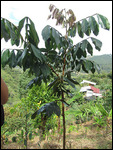
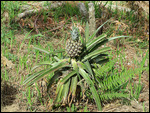
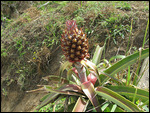
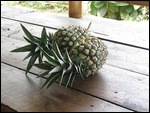
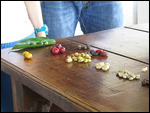
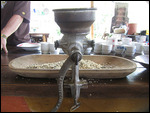
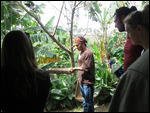
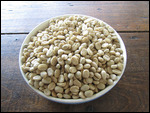
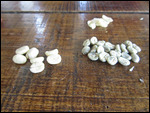

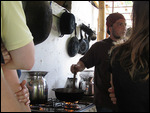
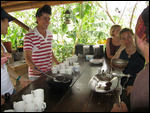
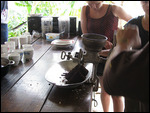
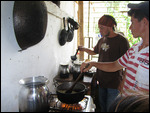
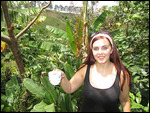
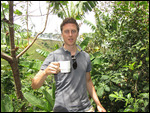

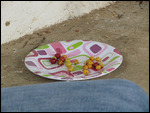
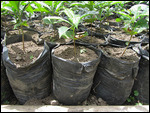
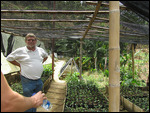
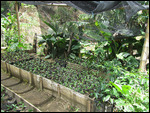
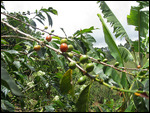
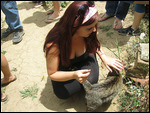
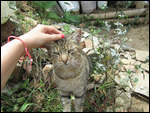
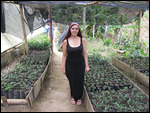
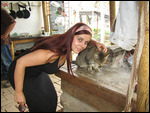
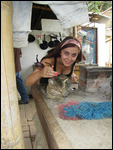
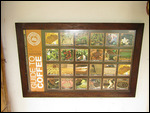
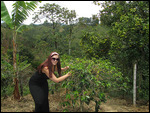
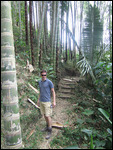
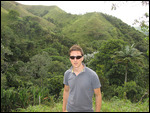
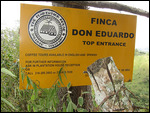
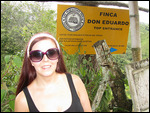
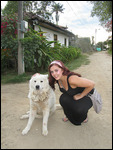



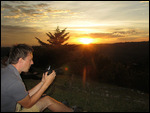
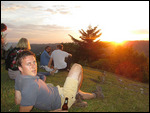
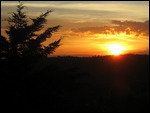
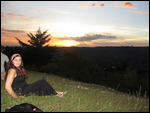
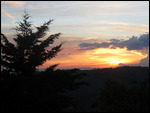



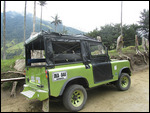
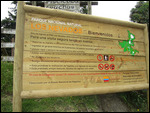
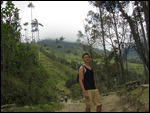
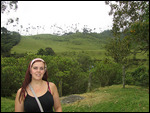
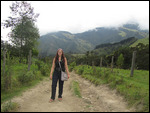




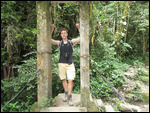



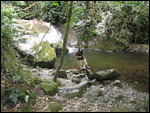



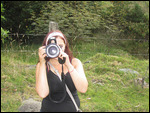
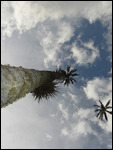


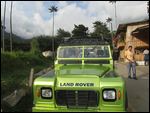

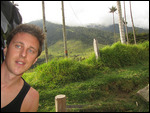



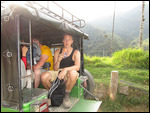

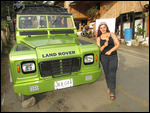
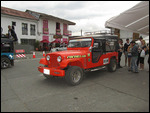
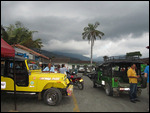
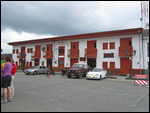
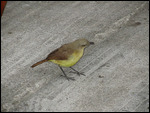
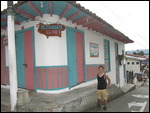
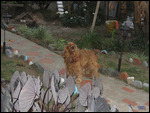
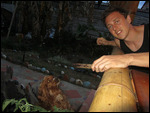
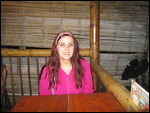

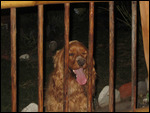

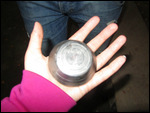
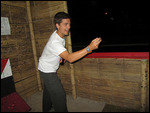

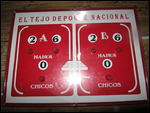

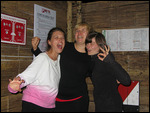
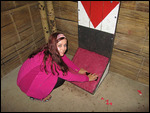

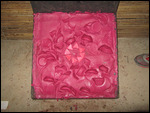
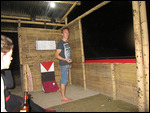
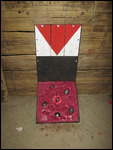
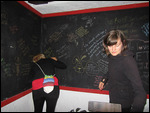
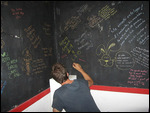

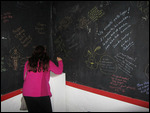
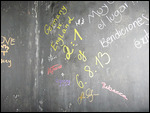
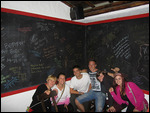
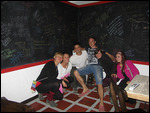
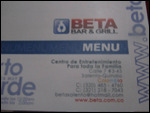

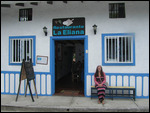
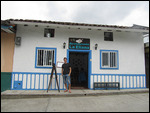
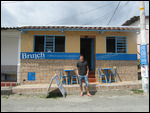
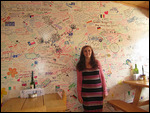
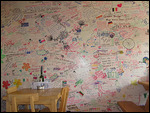

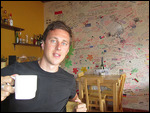
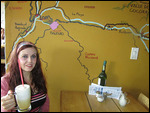
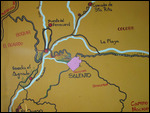
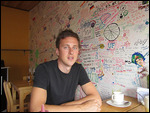
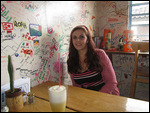
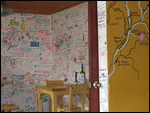
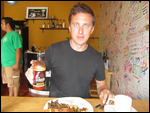

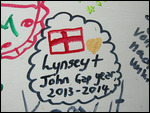
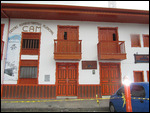
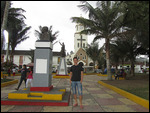
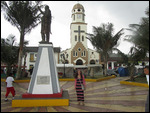
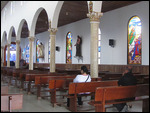
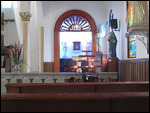
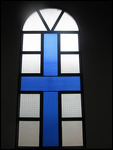
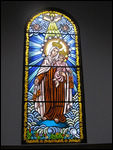
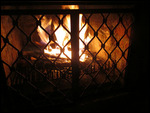
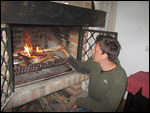
2025-05-22